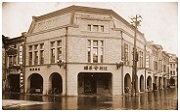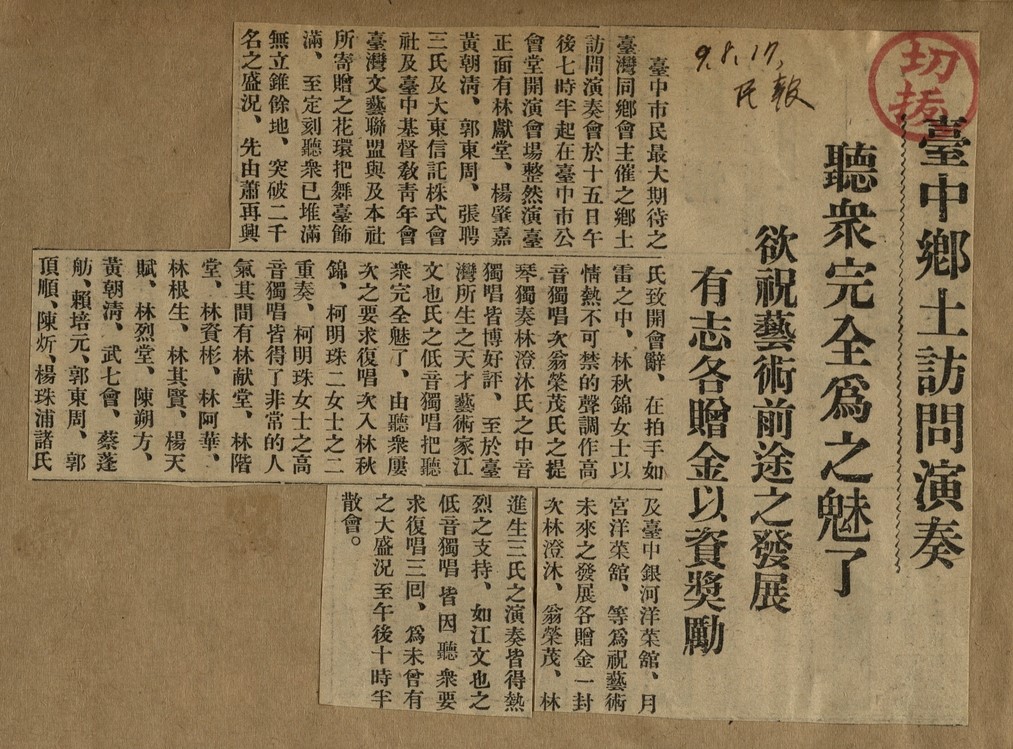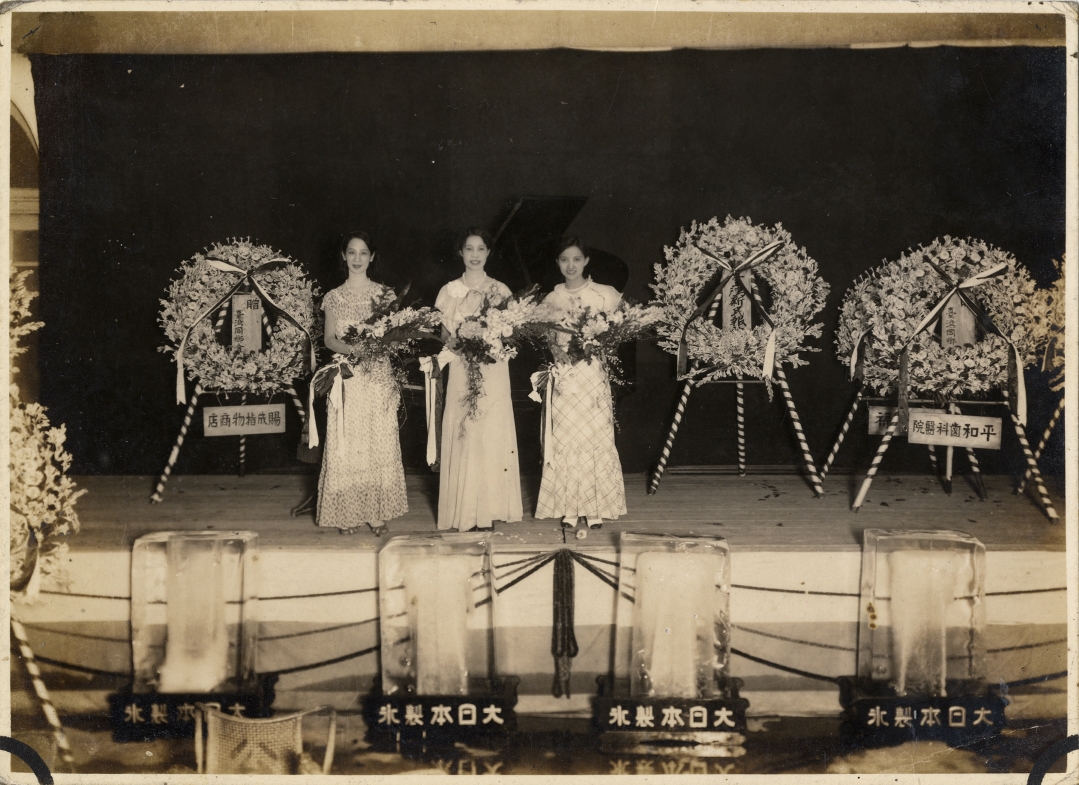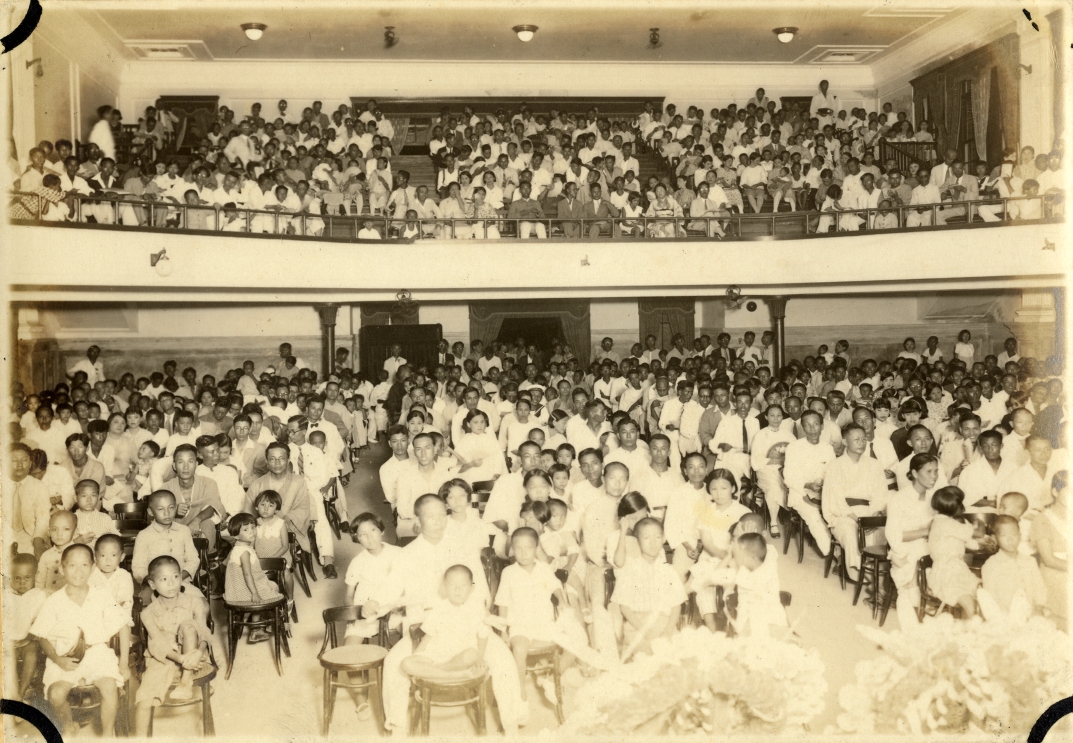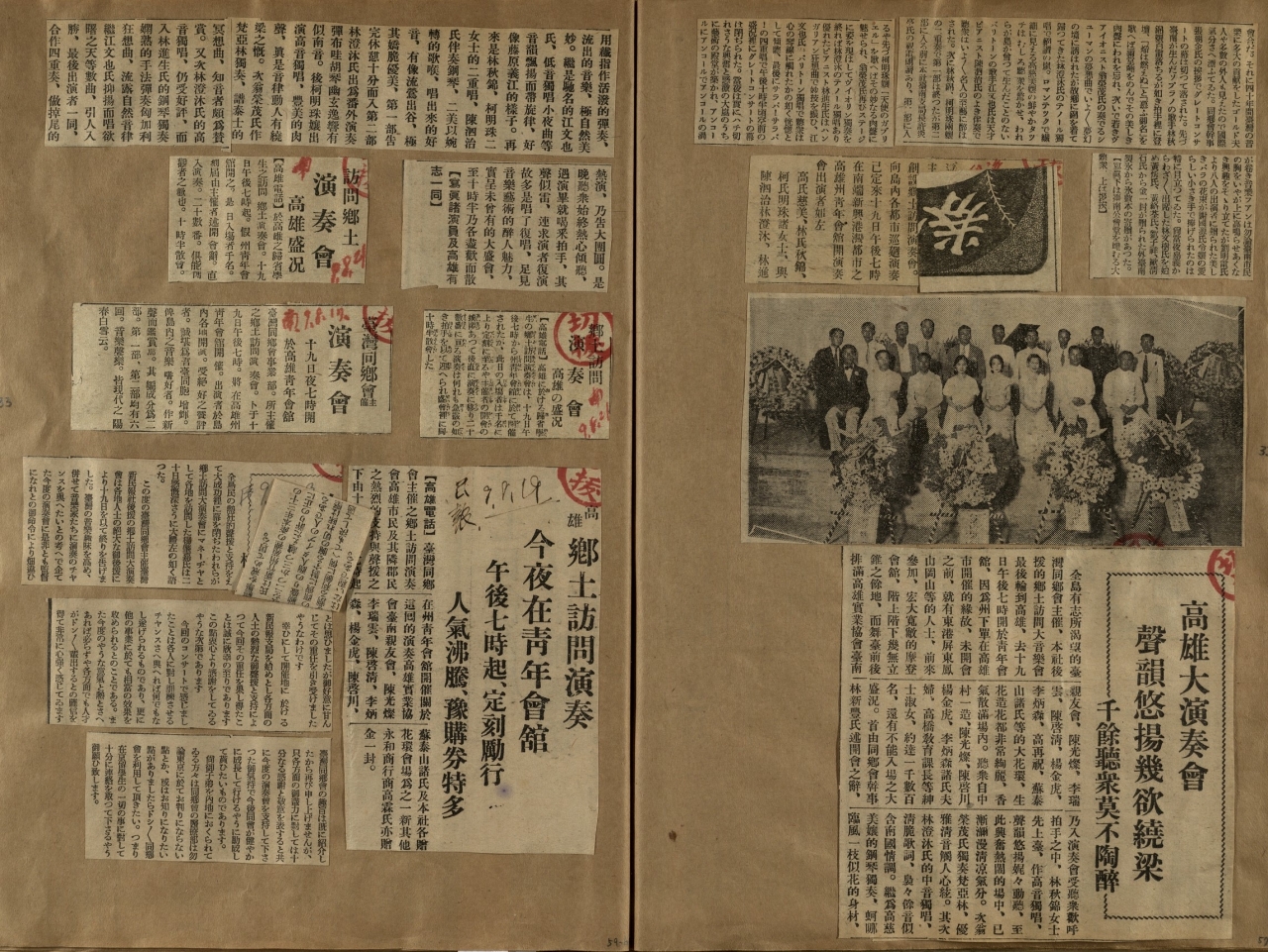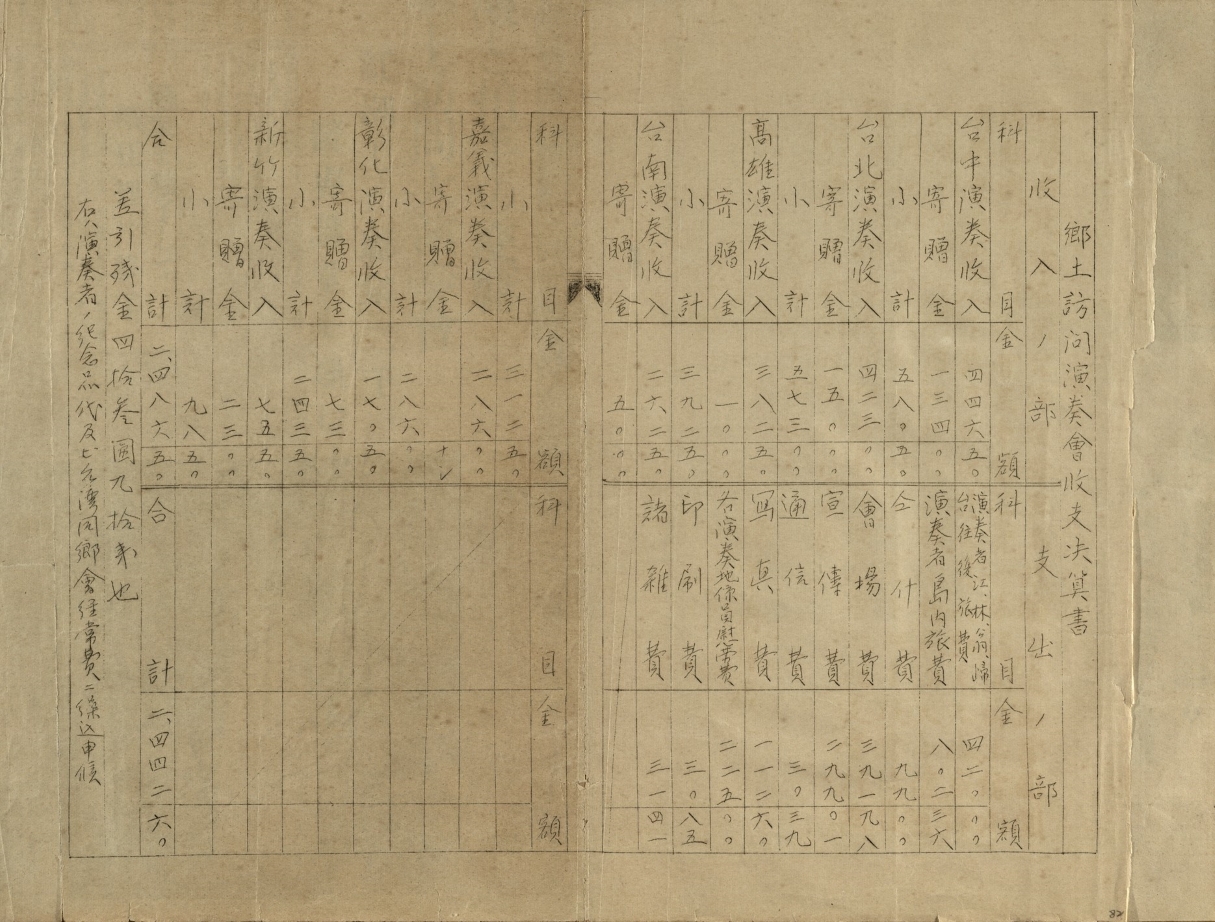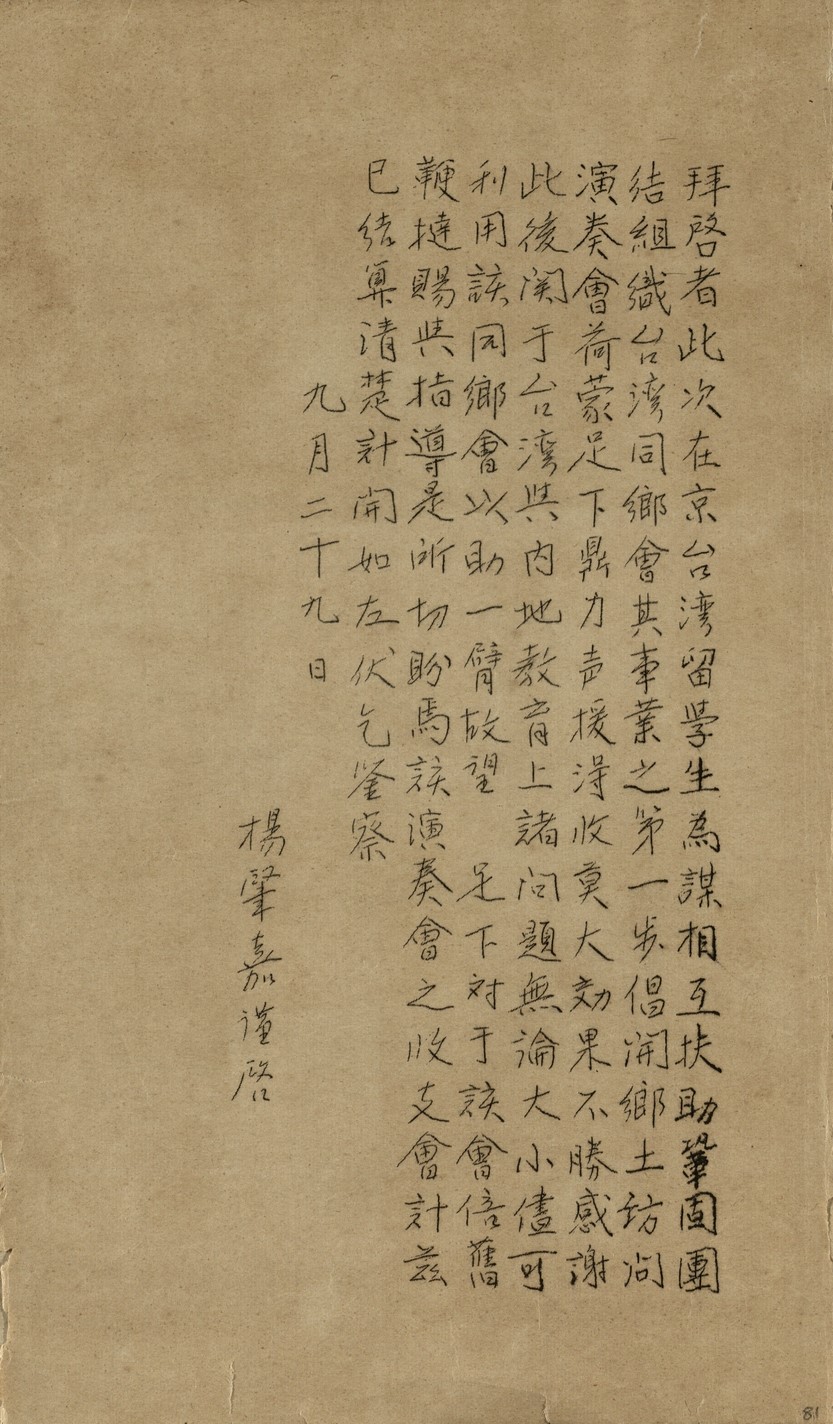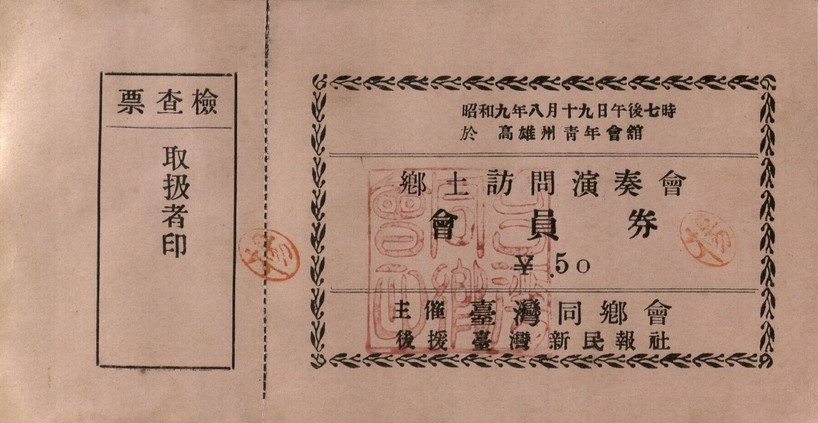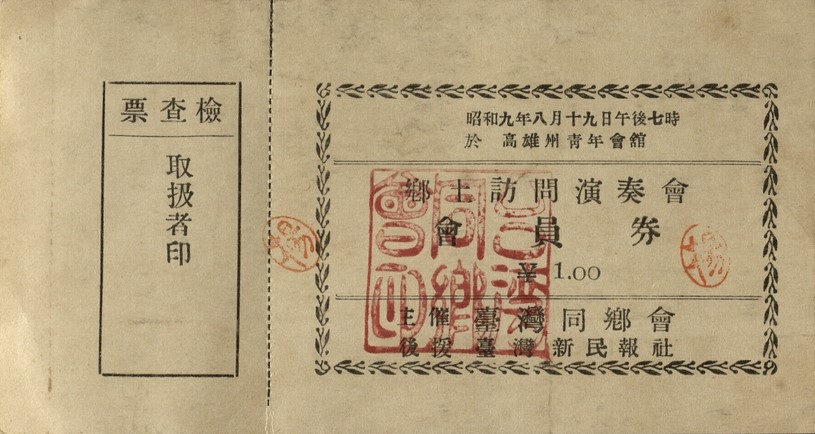|
The 1934 Homecoming Concert Tour, held in the sweltering summer heat of Taiwan, officially began with its grand opening performance on August 11 at the Taipei Medical School Auditorium. From there, the tour moved south, performing at public assembly halls in Hsinchu on August 12, Taichung on August 15, Changhua on August 16, Chiayi on August 17, Tainan on August 18, and concluding with a grand finale at the Kaohsiung Youth Hall on August 19. Each concert began between 7:00 pm and 7:30 pm and typically ended around 10:00 pm. The first concert was reported in Taiwan Shinminpo under the headline: “Two Thousand Audience Members Packed the Medical School Auditorium.” The report described the scene: “Starting from 5:00 pm, enthusiasts began gathering to enjoy the cool summer night. By the time they arrived at the brightly illuminated auditorium, there wasn’t an inch of standing room left—an overwhelming success!” The venue was adorned with floral wreaths sent by various organizations and individuals such as Zhang Fu-xing (張福興) and Li Yan-ling (李延齡). The article was accompanied by photos of Weng Rong-mao playing the violin, Chen Su-ti on the piano, and the audience packed to capacity. Another headline in Taiwan Shinminpo, “The Audience Was Completely Captivated,” highlighted the unprecedented success of the Taichung performance. The stage was filled with floral wreaths sent by prominent local figures, including Lin Hsien-tang (林獻堂) and Yang Zhao-jia, as well as organizations such as Taiwan Literary Arts League and Daito Trust Co., Ltd. During the performance, members of the Wufeng Lin family such as Lin Hsien-tang, among other local figures, made donations in local businesses such as Yuegong and Yinhe Agar Restaurant. Musical prodigy Jiang Wen-ye was repeatedly called upon by the audience for encores, performing a total of three additional pieces. The performance lasted until 10:30 pm that evening.
Figure 7: Report on the Performance of the Homecoming Concert in Taichung on August 17, 1934
Source: Taiwanese Association Homecoming Tour, Yang Zhao-jia Collection (LJK), 1934, Digital Collection of Archives of Institute of Taiwan History, Academia Sinica. During the performance at the Tainan Assembly Hall, a photo captured three female musicians receiving floral tributes showed the stage and its sides adorned with floral arrangements sent by various organizations, including Pinghe Dental Hospital. Large blocks of ice were placed at the front of the stage, marked with the names of ice manufacturers or sponsors as a form of advertisement. More importantly, these ice blocks helped cool the air and provided relief from the tropical summer heat of the South.
Figure 8: Photograph of Ke Ming-zhu, Lin Qiu-jin, and Gao Ci-mei Receiving
Flowers, Taken at the Tainan Assembly Hall on August 18, 1934 (from left to right) Source: The Homecoming Concert at Tainan Assembly Hall (I), Gao Ci-mei Papers (3GCM), 1934, Digital Collection of Archives of Institute of Taiwan History, Academia Sinica. The final performance was held at the Kaohsiung Youth Hall. From photographs taken at the venue that day, it is evident that the two-story hall was packed with attendees, including many children who came to enjoy this Western musical feast performed by Taiwanese youths studying in Japan and returning to their homeland.
Figure 9: Audience at Full Capacity at Kaohsiung Youth Hall on August 19, 1934
Source: The Homecoming Concert at Kaohsiung Youth Hall (V), Gao Ci-mei Papers (3GCM), 1934, Digital Collection of Archives of Institute of Taiwan History, Academia Sinica.
Figure 10: Report on the Final Performance at Kaohsiung Youth Hall
Source: Taiwanese Association Homecoming Tour, Yang Zhao-jia Collection (LJK), 1934, Digital Collection of Archives of Institute of Taiwan History, Academia Sinica. The unprecedented grandeur and success of the Homecoming Concert Tour can also be verified through the income and expenditure statement issued by Yang Zhao-jia in September 1934. A closer examination of the revenue from each performance reveals that ticket sales were highest in Taichung at 446 yen, while the largest donation, amounting to 150 yen, came from Taipei. The primary expenditure was the travel costs for the performers as they toured the island. The remaining surplus was used to purchase commemorative gifts for the performers, with the leftover funds allocated to the membership fees of the Taiwanese Association.
Figure 11: Financial Statement of the Concert
Source: Taiwanese Association Homecoming Tour, Yang Zhao-jia Collection (LJK), 1934, Digital Collection of Archives of Institute of Taiwan History, Academia Sinica.
Figure 12: Membership Ticket for the Homecoming Concert
The membership tickets for the Kaohsiung Youth Hall performance, with values of 0.5 yen and 1 yen, are preserved in the materials of the Homecoming Concert Tour collected by Yang Zhao-jia. Source: Taiwanese Association Homecoming Tour, Yang Zhao-jia Collection (LJK), 1934, Digital Collection of Archives of Institute of Taiwan History, Academia Sinica. |
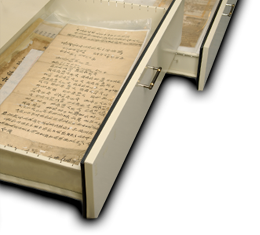 |


